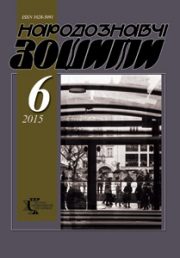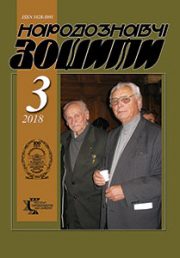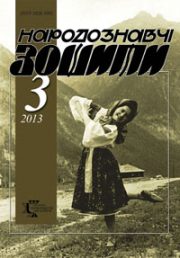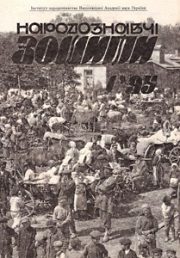The Ethnology Notebooks. 2020. № 5 (155), 1202—1212
UDK [94(=161.2-058.65:477.83-22):341.322(=162.1)]”1944″
DOI https://doi.org/10.15407/nz2020.05.1202
HORBAL Маrіa
- ORCID ID: https://orcid.org/0000-0001-9287-8336
- leading scientific editor,
- The Institute of Ethnology of the National
- Academy of Sciences of Ukraine,
- 15, Svobody Avenue, 79000, Lviv, Ukraine
- Contacts: e-mail: horbal.m@gmail.com
Abstract. Problem statement. On March 21st, 1944, still during the German occupation of Lviv region, a crime of murder of fifty Ukrainians took place in Tarasovo (Tarasiv) hamlet, in the forest between Rakivets and Selysko in Pustomyty district, Lviv region. The crime had been pre-planned and executed by an armed gang, Polish-speaking members of which were mostly from Davydiv village. That the crime had been pre-planned is proved by the fact that the mayors of Selysko, Lopushna, Cherepyn, Zhyrivka, Myloshevychi and Poroshna villages were, allegedly, informed that that day was going to be a firewood stocking day (as if they had to send coachmen to Tarasovo (“Tarasiv”) hamlet to bring the firewood).
The resourses used in our article are: the materials of F.I. Steblii “Krayova” Army in military actions in Ukrainian villages near Lviv (March-July 1944)” [1]; materials of the researcher of Lopushna village, N. Melnyk “My Lopushna” [2]; materials of scientific and practical seminar “Murder of the Ukrainians in Tarasovo hemlet and its neighborhood on March 20-21st, 1944, as a small “Volyn tragedy” of Nadzubriany region…”, that took place on March 25th, 2018, in Selysko village of Zvenygorod Deanery, initiated and organized by Father Dr. Petro Troletskyi, an administrator of St. Nicolas Chruch in Selysko village, and a lecturer in Ukrainian Catholic University, published on the official web-site of Ukrainian Greek-Catholic Church Lviv Archeparchy [3]; private journal notes of Ivan Grygorovych Ivaniv (born 1914), a forest ranger of a neighboring Tovshchiv village, that he took on that tragic day, as well as the testimonies of the respondents and residents of Selysko village.
As of today, there is a significant gap in the study about the victims of Polish-Ukrainian conflict. The reminder of this tragic event, to this day, brings horror on the residents of Selysko, Lopushna, Cherepyn, Myloshevychi, Poroshna, Zhyrivka villlages in Lviv region. Therefore, the facts of sabotage actions need scientific scrutiny, as they may reveal the real reason of a mass terror with demonstrated sadism. This substenciates the relevance of the topic. The goal of our research is to study and analyze the events in the village of the victims — Selysko, Pustomyty district, after the crime comitted by Polish gangs in Tarasovo hemlet (and the neighborhood), March 21st, 1944.
The methods used in the research are: systematic method, historic reconstruction, contextual method. At the stage of information gathering and systematizing — interview.
Keywords: Tarasovo hemlet («Tarasiv»), Selysko, Lopushna, Cherepyn villages, Greek-Catholic priest, Ukrainian victims, Krayova Army (KA).
Received 7.10.2020
REFERENCES
- Steblii, F.I. (2010). «Krayova» Army in military actions in Ukrainian villages near Lviv (March-July 1944). Lviv [in Ukrainian].
- Melnyk, N. (2020). My Lopushna.Lviv [in Ukrainian].
- A seminar dedicated to the Tarasiv hemlet tragedy took place in Selysko village. Retrieved from: http://ugcc.lviv.ua/2018/03/27/u-selysku-vidbuvsya-seminar-prysvyachenyj-tragediyi-hutora (Accessed 8 October 2020) [in Ukrainian].
- The tragedy of the villages near Lviv. Retrieved from: https://vgolos.com.ua/news/tragediya-pidlvivskyh-sil_113002.html (Accessed 8 October 2020) [in Ukrainian].







